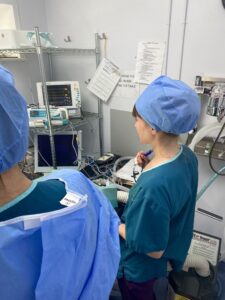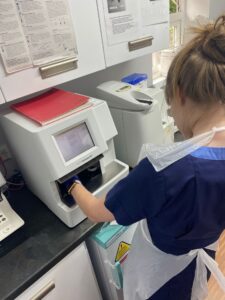 I studied to become a veterinary nurse and achieved this by apprenticeship; I worked in practice four days a week and had one day release to college. I studied through lockdown so my college studies were achieved on Zoom. Lockdown was hard for everyone and I found studying online particularly difficult. I feel it’s important to tell you this is how my career started so I can tell you how I’ve progressed as an RVN and gone from strength to strength.
I studied to become a veterinary nurse and achieved this by apprenticeship; I worked in practice four days a week and had one day release to college. I studied through lockdown so my college studies were achieved on Zoom. Lockdown was hard for everyone and I found studying online particularly difficult. I feel it’s important to tell you this is how my career started so I can tell you how I’ve progressed as an RVN and gone from strength to strength.
I came to Hollybank newly qualified and full of nerves, some nerves from starting a new job but some from ‘imposter syndrome’. Hollybank has empowered me to become confident, ask questions and has supported me on the beginning of my journey. This career is forever changing and developing which is highly recognised and discussed between my colleagues -we are always sharing new information and tricks!
As Veterinary nursing goes, we are multidisciplinary and support our vets and our receptionists acting as a team. Some of our roles include answering the phone, booking appointments, dispensing and administering medication (vet prescribed), providing nurse clinics (weight clinics, post operative checks, socialisation), taking blood samples, preparing patients for surgery and monitoring anaesthetics. These are just a few of the things that we do, that I love as a vet nurse.
We also become Veterinary nurses for the love of our patients and to provide gold standard care. Hollybank strives for gold standard care by carrying out rounds with the vets and nurses to discuss each case and encourages continuous professional development (CPD) so we can refresh and further our knowledge.
I love being a veterinary nurse, getting to meet everyone’s pets, to be there for them in their time of need and provide TLC when they’re feeling scared or sore.



